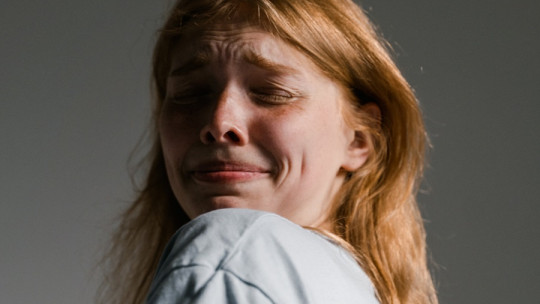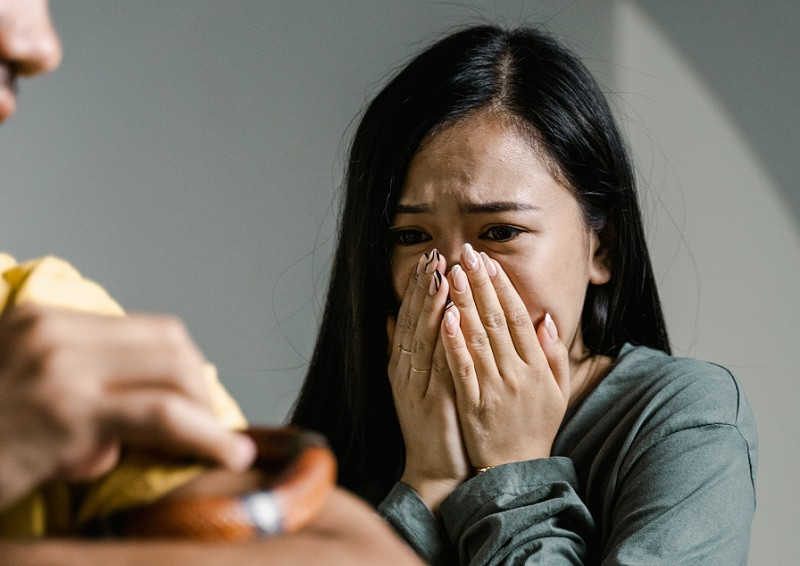
Both concepts, anxiety and fear, show similar traits, which means that both terms can be confused. We must try to know the differences to know when it is appropriate to use each one.
So, in this article we will talk about the differences between anxiety and fear how both terms are defined and what differences they show.
What are the differences between anxiety and fear?
Anxiety is a state of activation of the organism, which gives rise to an experience in which the subject feels restless, excited, insecure. For its part, fear is defined as a feeling of anguish that appears in the face of real or imagined danger. In both cases the reaction is similar, anxiety is even described as a feeling of fear. But We should not be confused or use both terms as synonyms, since they show differences; Therefore, we cannot consider them the same reaction.
Let’s see what these differences are that distinguish anxiety from fear.
1. The stimuli that cause the reaction
Although the reaction may be similar, the stimuli that produce it are different. When the stimulus is dangerous, such as a lion, we will talk about fear ; On the other hand, when the stimulus is a threatening situation for the subject, it can affect our interest, our social image… we will consider that it is anxiety. That is, we can consider that stimuli that cause fear can pose a danger to the life of the person who feels it. On the contrary, the situation that produces anxiety is not dangerous for the subject’s life.
2. Type of reaction
Linked to the type of stimulus that each sensation entails. In the case of fear, since it is a reaction to a stimulus that threatens the subject’s life, the behavior that appears most frequently, involuntarily, is flight, running away. Or even, depending on the situation, the most adaptive reactions may consist of fighting if we have no escape, or remaining paralyzed, so that they do not see us.

Instead, In situations that generate anxiety, we will only need a small activation for it to be functional, serves to alert us, but allows us to control it. Otherwise, if the reaction is very high, it can affect our performance, not allowing us to behave appropriately.
3. Facial expression
Fear can be understood as a basic emotion, since it consists of a universal facial expression, capable of being recognized by subjects around the world, it is cross-cultural. In the same way, this facial expression is not learned, which means that we show it from a very young age, even blind subjects who have not been able to see the expression perform it without problems.
On the contrary, anxiety is not linked to a specific facial expression, that is, the subject can express it in different ways and not all cultures will show it in the same way.
This distinction and lack of universal expression for anxiety may be due to the importance of each reaction, that is, fear is a functional reaction, which makes us activate and act in the face of a situation that can put our lives at risk. On the other hand, the feeling of anxiety is not an indicator of danger for our survival, we could not show it and continue living.
4. Time of appearance
We could consider that fear appears when faced with a present stimulus, which generates an immediate reaction in us due to the threat it poses. On the contrary, anxiety usually appears when faced with a possible future event. That is, the event has not yet taken place, but the subject feels restless and excited about it, anticipates what may happen, linking itself with negative thoughts.
With the following examples it will be easier to understand: fear will appear when exposed to a snake, the animal is present; On the other hand, anxiety appears when we anticipate how we will feel, what will happen, when we present the work in front of the class, the event has not yet taken place.
5. Nature of the terms
Both concepts show different nature or highlight different components. Biological components influence fear; As we have seen, it is an innate, not learned, reaction that occurs automatically when faced with a dangerous stimulus. Instead, anxiety shows a cognitive nature, thought acts to a greater extent, how the subject interprets the situation and what meaning it gives it. In this way, although we also observe behavioral and physiological reactions in anxiety, the cognitive interpretation that is made is what will lead to the experience of anxiety.
6. Brain activation
In both cases, brain activation occurs, but in the case of fear, since it is a more unconscious reaction and above all due to the need to make a quick response that protects us from danger, the circuit that is activated is short, information from the external stimulus reaching the amygdala which is part of the limbic system and is what will give rise to the feeling of fear.
However, anxiety will require a longer mental process, a cognitive interpretation and assessment of the situation is carried out, which will take into account not only the external stimulus or situation, but also the knowledge or experiences that we have previously experienced. In this way, as more time is needed to show the feeling of anxiety, the reaction will not be instantaneous, as we have said, since the subject’s life is not in danger, this is not necessary either. As we see, our body is wise and knows how it should process each stimulus.
7. Type of treatment
Since the stimulus that generates the reaction and the mental process that is carried out are different, The treatment indicated for each sensation will also be different In the case of fear, which, as we saw, occurs when faced with an external stimulus that poses a threat to the subject, we will consider this reaction as functional. But when this reaction appears intensely, affecting the subject’s life, we do see it necessary to intervene.
The treatment that has shown the greatest effectiveness in these cases is in vivo exposure to the phobic stimulus The degree or intensity of exposure will depend on each patient. In order to prevent the exposure experience from being experienced as very aversive and the feeling of fear being very intense, we can perform complementary behaviors, such as breathing to reduce activation. When exposing yourself to the stimulus is difficult, either due to its low frequency of appearance or the high expense involved, such as traveling by plane, we can carry out exposure in imagination or in virtual reality, although we must always end up carrying out live exposures.
Now, as we have mentioned, a more subjective assessment intervenes in the process that occurs when faced with the feeling of anxiety, that is, the way the subject interprets and evaluates the situation. For this reason, the intervention on this occasion will be aimed at modifying thinking or the way of interpreting the situation, with the purpose of achieving more adaptive thinking that does not generate discomfort in the individual.
The technique that has proven effective is cognitive restructuring, which consists of confronting the irrational and negative beliefs that the subject may show, with the purpose of trying to reverse these distortions and achieve more functional thinking. Questions such as “What if?” or “What’s the worst that can happen?” so that the person takes into account and evaluates other alternatives and realizes that the consequences that could occur are not as negative as they believe.
Likewise, exposure to the phobic stimulus or situation is also appropriate and has shown effectiveness in reducing anxiety. For example, in situations of social anxiety, working in groups has shown good results so that patients can expose themselves to social situations and practice acting in a safe environment.
At the moment, the intervention that uses cognitive and behavioral techniques in a combined way It has proven highly effective, being one of the most used in different disorders, such as anxiety disorders.








